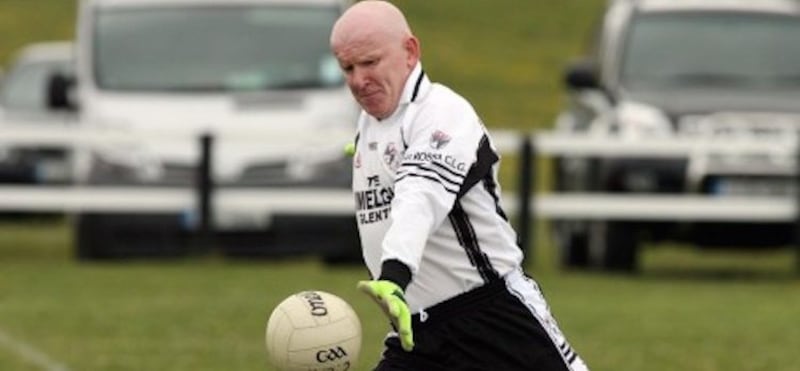Both rural and urban GAA clubs face increasing challenges as demographics in Ireland change. This is one of a series of articles exploring the issues clubs face and what they are doing to adapt.
Na Rossa (Donegal)
Founded: 1976. Members: 100-150.
Number of teams: 1 adult team (And hoping to field some underage teams on an 11-a-side basis)
Declan Bonner, at the age of 54, played in goal for Na Rossa during the 2019 Donegal junior football championship.
READ MORE
It was a story that generated a bit of a fuss at the time. He was still the Donegal manager then, yet there he was wrestling on the gloves to rescue his club, who were struggling for players. He played in three championship games that year as Na Rossa got to the semi-finals.
But by the time the championship ended most folk had already moved on from the story. Na Rossa don’t get to move on, though. Every year they continue to perform this high wire act of trying to accumulate enough bodies to field a team. Eventually, the fear is they’ll fall.
Bonner has since stepped down as Donegal boss but he remains Na Rossa chairman, a role he admirably carried out concurrently whilst managing his county. Emigration has hit the Lettermacaward club hard, many of their young people swapping the Gweebarra Bridge for that more famous one in Sydney.
“Last year we were working off a squad of about 21 players,” says Bonner. “That was having everybody available, and within that group maybe three lads were around the 40 age bracket and some other lads were coming home from London to play.
“We have now lost three players from that group, they are heading away. And we only have one player coming in who played under-17 with Dungloe last year. If we were to lose more then you would be in a serious situation, that’s the reality.”
The second team was scrapped about a dozen years ago. Now they are struggling to maintain just one.
“We are basically living on a year-to-year basis,” adds Bonner.
“Look, nobody is going to come back anytime soon. And it’s not just here but in the wider Donegal area, a lot of lads are moving to Australia again. It’s frightening to see what is happening.”
Na Rossa were Donegal junior champions in 1982, and intermediate kingpins in 1989 and 1999. They lost an intermediate final as recently as 2008.

During the good times, Michael Duddy’s Irish Oak flooring company provided employment for players and backing for the club, but when that business closed it wasn’t replaced locally. As more people moved away, numbers dropped off and eventually the club’s underage structures started to unravel.
Na Rossa currently have an agreement with Dungloe, who take their players for certain underage levels. The plan is they return after minor to bolster the falling numbers of Na Rossa’s adult team.
At some age brackets where they can muster enough kids, Na Rossa do put juvenile teams out – but often seeking do so on an 11-a-side basis. It’s not a strategy with longevity.
[ All challenges are different for GAA clubs - in Na Fianna, we crave spaceOpens in new window ]
“People probably don’t realise, it’s basically hanging by a thread, that is where it’s at,” warns Bonner.
In a bid to inject fresh energy to the club, in recent years they embarked on a major development project to build a new pitch on the main road in Madavagh. They now boast one of the best pitches in Donegal. Their next target is to have dressingrooms erected by the end of the year, but there is no guarantee by that stage Na Rossa will have a team to use them.
“It would be an absolute travesty if we had to fold. We are doing our best to keep it going, but it hasn’t been easy,” says Bonner.
And yet it is not a battle without hope. Na Rossa have got to the semi-finals of the junior championship in three of the last four years. There is the nucleus of a strong team, but they need to stop the emigration drip draining more players from the area and hold on long enough for younger footballers to come through. Which is all easier said than done, of course.
“There is goodwill towards the club because it’s really important for the identity of the area,” adds Bonner. “But ultimately if you don’t have the numbers and if nothing changes then the club is going to struggle.”














